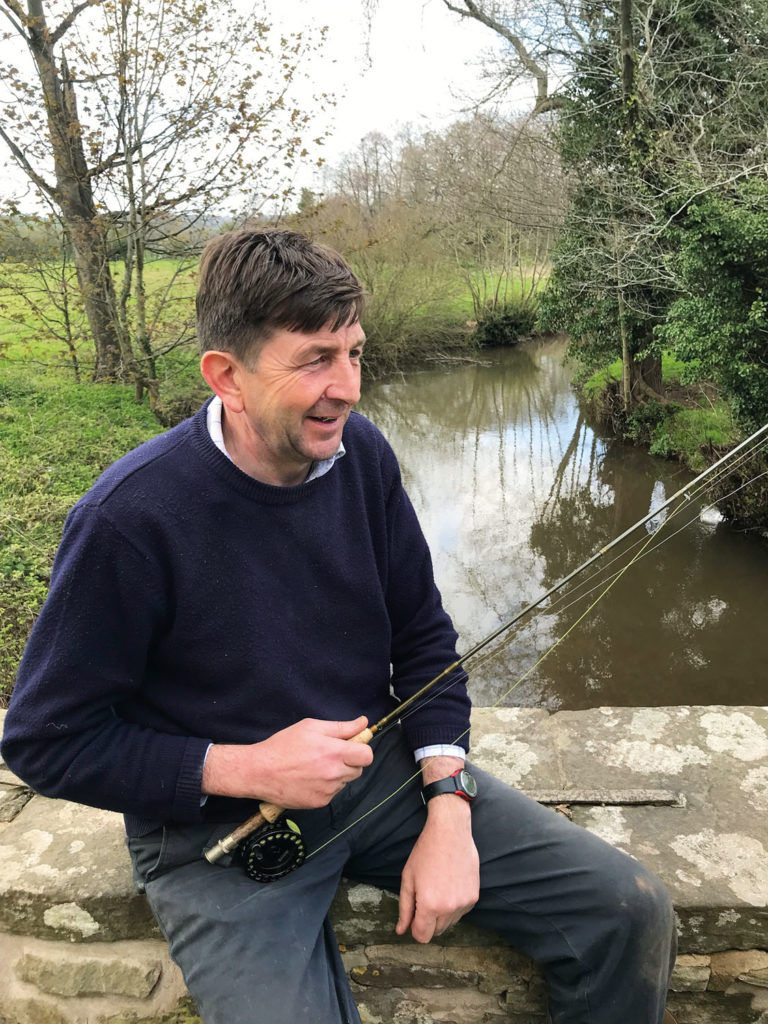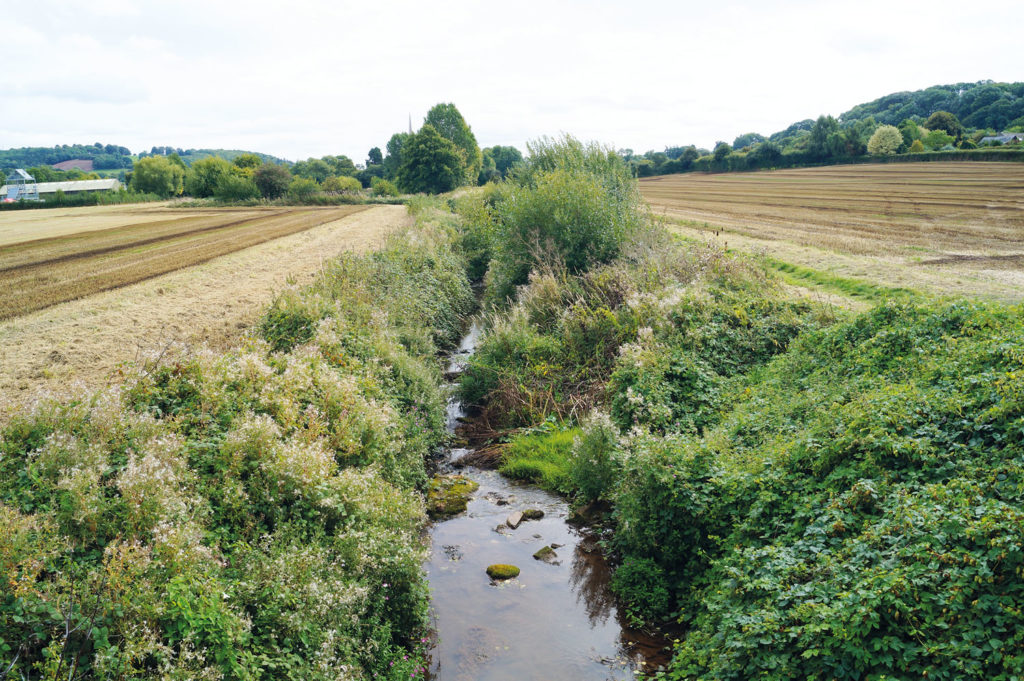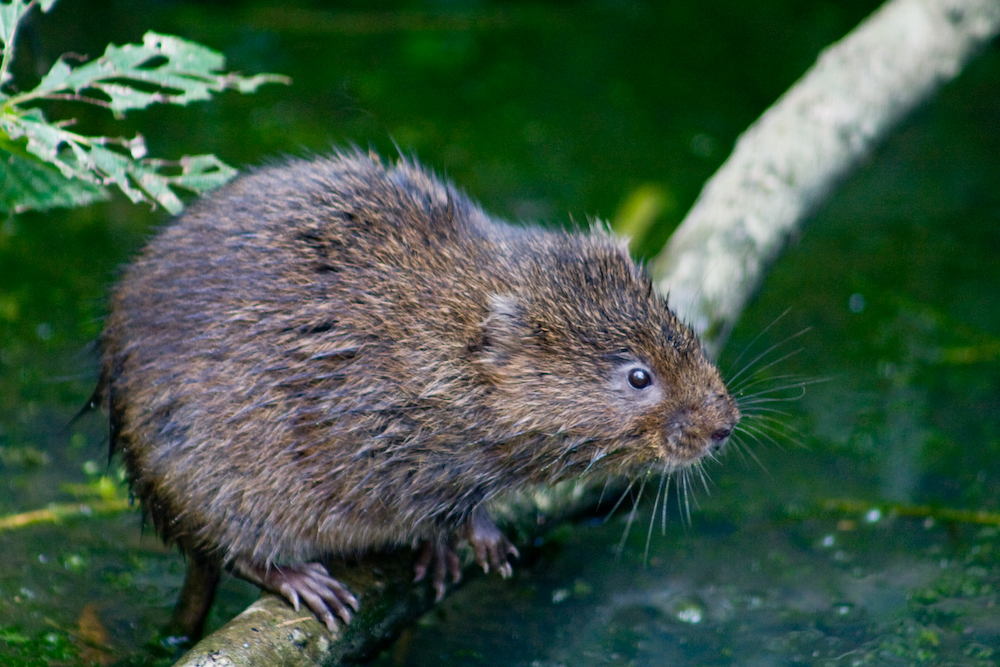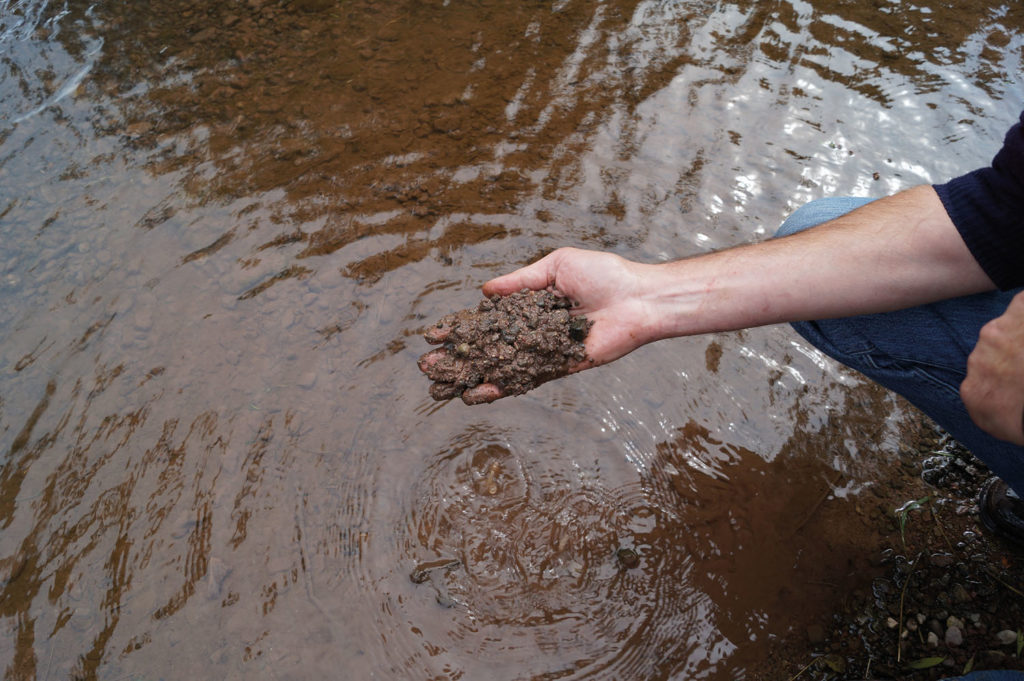How Rob Denny recruited an army of volunteers to restore water voles to the Monnow

The Monnow, which flows along the English/Welsh border before joining the Wye near Monmouth, was once a mecca for flyfishermen. In 1904, The Field described it as one of the best trout streams in Britain, but its fish went into serious decline in the 1980s. This deterioration was checked in 2003 thanks to a pioneering restoration project led by the Game & Wildlife Conservation Trust in partnership with the Monnow Rivers Association.
Local land agent and former Monnow Rivers Association chairman Rob Denny remains a driving force behind the restoration work. His unfailing commitment and understanding of the challenges faced by farmers were essential in winning the support of the river owners. He said: “In the late 1990s, GWCT advisor Ian Lindsay suggested we could transform the Dore. He lived locally so was able to get key figures in the community on board, and I spent a lot of time knocking on doors.”
Farm facts
- Location: Herefordshire/Monmouthshire
- Type of farming: Sheep, beef, arable
- Acreage: 42,200 hectares
- Funding grants: Defra, GWCT, Monnow Fisheries Association, Wild Trout Trust Salmon & Trout Association, Grayling Research Trust, Environment Agency (Wales)
It was clear from the outset that it would be vital to win the farmers’ hearts and minds. Trout were suffering from soil and fertiliser runoff from the fields, erosion of banks and grazing out by livestock, which was stifling the flow. Rivers with a good current are self-cleaning, the flow of water removing sediment from the gravel beds where the trout lay their eggs, but silt was clogging the stones and starving the young fish of oxygen. Moreover, the water was overshadowed by trees, preventing beneficial bankside vegetation from establishing.
An ambitious plan was hatched to coppice and fence off large stretches of the Monnow tributaries. As well as keeping livestock out, this would create a buffer of varied vegetation, which would stop nitrogen, silt and slurry runoff and create good habitat for fly life. Farmers were initially apprehensive about fencing off their river banks, but could see that there was less likelihood of their livestock being lost and it would save the cost of tree felling and repairing the banks.

Working with the Wye and Usk Foundation, Rob also designed an ingenious way for flyfishers to pay for the fishing. Metal boxes were set up on each river beat, fishermen bought a day ticket from the local post office or pub, and they deposited it wherever they were fishing. At the end of the season, the landowner was paid according to the number of tickets in the box. These days it can all be done online, but the principle is the same and it has opened up parts of the river that were previously unavailable for fishing. Rob said: “It wasn’t a huge amount, but it was important for farmers to get something in return for allowing access.”
Enticing more visiting fishermen to provide an economic boost to the area was central to the plan and helped secure funding of £1.1 million over three years from Defra’s England Rural Development Project.

Work commenced in 2003 on the Dore and several other tributaries of the Monnow, including the Honddu, with three local men employed full-time to carry out the felling and fencing and install cattle crossing points with water gates to stop livestock. By 2006, 70km of bank had been restored and changes to the river habitat were immediate. The gravel was cleaner and a great range of bankside flora grew up, boosting land-based insects for the trout and aquatic fly life associated with a range of plant species. Rob said: “The project was a huge success in terms of local engagement. We even ran lessons for our local primary school literally in the river, so we could show where to find insect larvae and other aquatic life. Many of the pupils were farmers’ children and I hope they are inspired to continue the work of their parents in protecting their river.”
The annual catch increased and the Monnow and its tributaries became an increasingly popular fishing destination. An annual fishing festival was established, attracting people from across the UK. Rob said: “Fishing for wild trout here is very different to a Hampshire chalkstream. It’s popular because it’s accessible, a fraction of the price and takes you to some wonderfully wild and tranquil spots.”
The second chapter in the restoration project came out of the incidental creation of the perfect habitat for water voles. These much-loved creatures, which inspired the Wind in the Willows character Ratty, had last been seen 15 years earlier and were thought to be extinct in the area. The rejuvenated riverside vegetation now offered a perfect food source, but the voles would need to be reintroduced artificially and the local mink tackled. A non-native invasive species and voracious predator, mink is largely responsible for the water vole being among the UK’s fastest declining mammals, vanishing from 85 per cent of sites in just seven years. The GWCT had already invented the mink raft, a floating platform with a clay-filled tray designed to detect the predator’s presence by its paw prints.

Previously soil run-off clogged the gravel, suffocating the trout eggs. 
Reducing erosion and increasing flow has cleaned the riverbed.
Once mink have been discovered, a trap is set on the raft. GWCT senior scientist Dr Jonathan Reynolds said: “The GWCT mink raft had been trialled on the Hampshire chalkstreams, but we needed a larger-scale demonstration, so our research interests coincided with the dreams of the Monnow Rivers Association.”
Jonathan set up a research project on the Dore in 2006 and employed the local vicar’s sons, Ben and Owen Rogers, who had the trust of the farmers on whose land they were working. It only took a few weeks to remove the mink on a stretch of river, and continuous monitoring allowed a rapid response to reinvasions from adjacent catchments. Reintroductions began almost immediately and after nine months, 500 voles had been released at more than 50 separate locations along a 18-mile stretch of the Dore. The project was a stunning success and remains unique as a scientific study of lethal population control, eradication in the face of continual immigration, and turning back the clock on biodiversity loss.
Conservation in numbers
- 70km riverbank restored in three years
- 300 increase in the number of fishing visits to the Dore
- 6,411 man hours on mink control (2006-2010)
- 40 local community volunteers
- 5,000 hours of voluntary work by mink monitors
When research funding ran out in 2010, Jonathan donated the GWCT equipment and offered guidance to Rob and the rest of the team to continue the monitoring through volunteers. He said: “It was clear that government could not pay for the required effort in every river catchment, nor could conservation charities. The question was: did the local community really care and were they willing to do something about it?
“What we needed were people who wouldn’t have to go out of their way to check a raft, such as dog walkers living close to the river, and each landowner should only have to deal with one person whom they knew. We then met with all the farmers and they could see that there was no outside agenda – the attitude was, ‘It’s a beautiful little river, its ours, so we should look after it and its wildlife.’”

Rob employed his impressive skill at galvanising local support, and the team of 40 volunteers is now run by part-time co-ordinator Nick Longman, whose post is funded by the Monnow Rivers Association. In addition to checking the traps, the volunteers are helping to clear the pernicious non-native plants Himalayan balsam and giant hogweed. The result is that ten years after the externally funded work finished, the water voles are still in residence, a fantastic achievement.
The work to restore and maintain large stretches of the Monnow Catchment continues, benefiting a wide range of aquatic life from water voles to invertebrates, and Rob is planning to mobilise his army of volunteers to expand the mink-free area so people may one day see Ratty return to the Wye. When asked what inspires him he said: “A simple desire to put something back into a sport and a landscape I love and to try and leave the environment a little better than I found it.”
This case study is taken from our book Working Conservationists Issue 2, available here for just £3.95.
